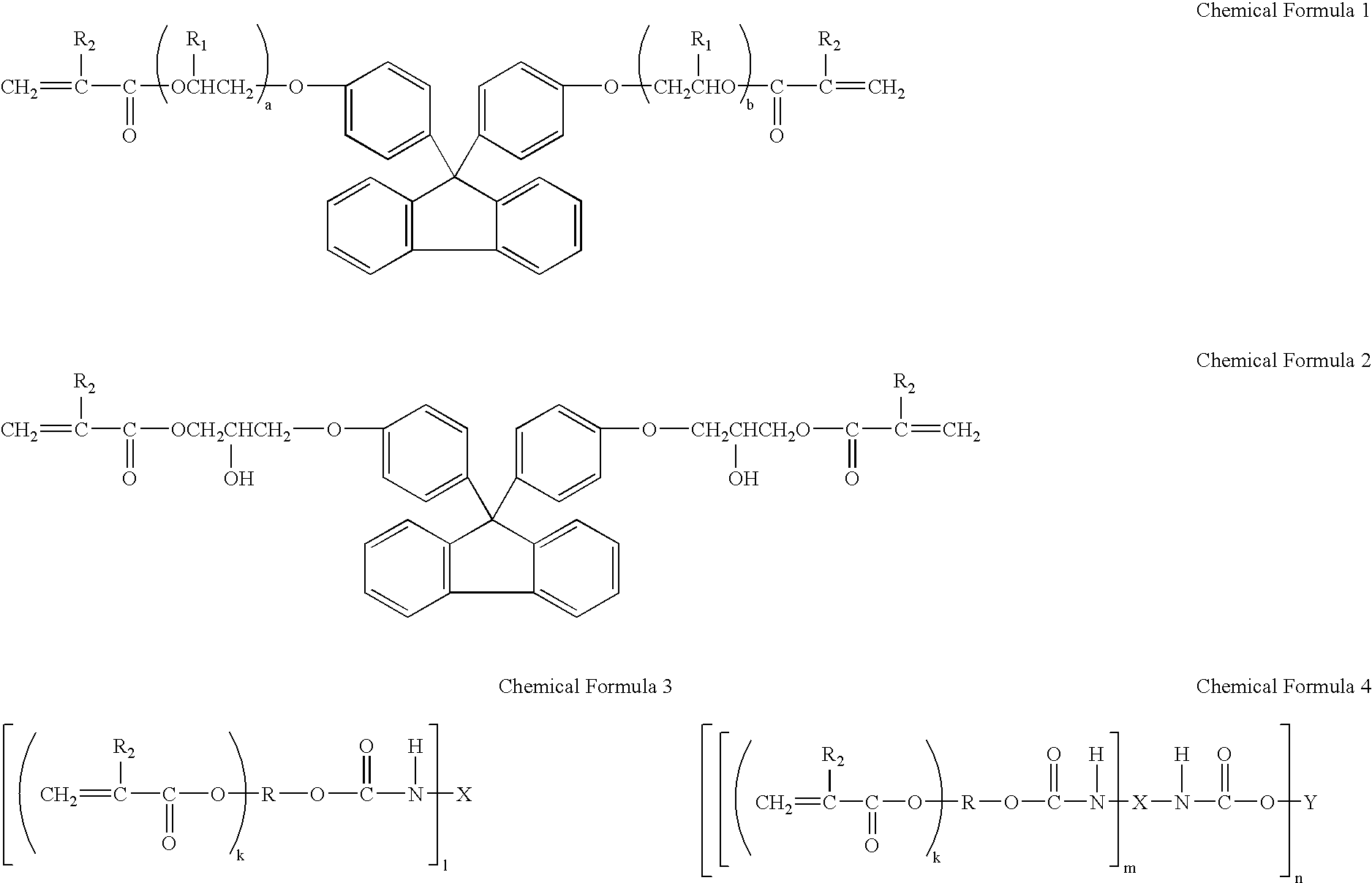Antireflection material and polarizing film using the same
- Summary
- Abstract
- Description
- Claims
- Application Information
AI Technical Summary
Benefits of technology
Problems solved by technology
Method used
Image
Examples
first embodiment
1 First Embodiment
Synthesis Example A-1
600 g of bisphenoxyethanol fluorene (trade name: BPEF; produced by Osaka Gas Chemical Co., Ltd.), 258 g of acrylic acid, 30 g of p-toluenesulfonic acid, 1350 g of toluene, 1 g of hydroquinone monomethylether, and 0.03 g of hydroquinone were mixed, and the dehydration esterification reaction was carried out on the mixture under refluxing at 100 to 115.degree. C., until the theoretical anhydrous amount is obtained. Then, the reacted solution was neutralized by alkali, and was washed with a 10% salt solution. After washing, toluene was removed, and diacrylate (A-1) was obtained.
synthesis example a-2
350 g of bishydroxyphenyl fluorene, 500 g of epichlorohydrin, and 10 g of triethyl benzylammonium chloride were mixed, 160 g of 50% sodium hydroxide aqueous solution was dropped therein under refluxing, and the mixture was reacted for about 3 hours while distilled water was removed outside the system. Then, 300 g of water was added, and after standing, an organic layer was fractionated. The organic layer was adjusted to a pH value of 5 by acetic acid, and was washed two times by 300 g of water. Then, the remaining water and epichlorohydrin were removed by concentration. This product was an epoxy equivalent of 270. 80 g of toluene, 0.5 g of hydroquinone monomethyl ether, and 95 g of acrylic acid were added thereto, and this was heated to 100.degree. C. and was reacted for about 15 hours. Diacrylate (A-2) solution having a resin acid value of 5 mg KOH / g, an epoxy equivalent of 7500, and a solid content of 85%, was thereby obtained.
synthesis example b-1
940 g of mixture of pentaerythritol triacrylate and pentaerythritol tetraacrylate (hydroxyl group value of 120 mg KOH / g, hereinafter referred to as PETA), 168 g of hexamethylene diisocyanate (hereinafter referred to as HDI), and several drops of dibutyl tin dilaurate (hereinafter referred to as DBTL) were mixed, and this was heated to 80.degree. C. and was reacted for about 5 hours. Urethane acrylate (B-1) was thereby obtained.
PUM
| Property | Measurement | Unit |
|---|---|---|
| Critical surface tension | aaaaa | aaaaa |
| Mass | aaaaa | aaaaa |
| Mass | aaaaa | aaaaa |
Abstract
Description
Claims
Application Information
 Login to View More
Login to View More - R&D
- Intellectual Property
- Life Sciences
- Materials
- Tech Scout
- Unparalleled Data Quality
- Higher Quality Content
- 60% Fewer Hallucinations
Browse by: Latest US Patents, China's latest patents, Technical Efficacy Thesaurus, Application Domain, Technology Topic, Popular Technical Reports.
© 2025 PatSnap. All rights reserved.Legal|Privacy policy|Modern Slavery Act Transparency Statement|Sitemap|About US| Contact US: help@patsnap.com



